Jiming Temple
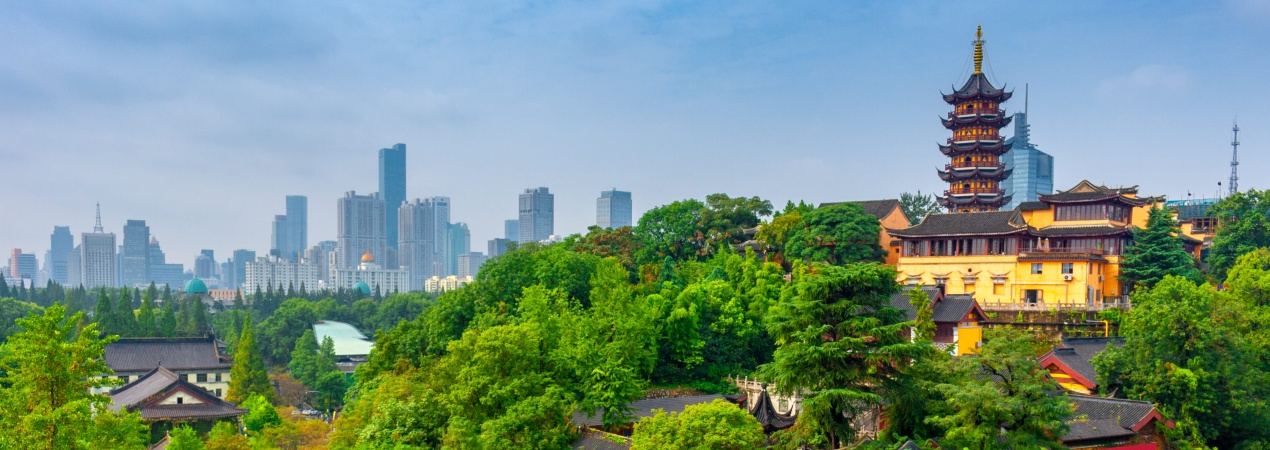
Jiming Temple, also known as Ancient Jiming Temple, is located on the eastern foot of Jilong Mountain in Xuanwu District, Nanjing. First built in the first year of Yongkang in the Western Jin Dynasty (300 AD), it has a history of over 1,700 years. As one of the oldest Buddhist temples in Nanjing and a royal temple for successive dynasties, it has enjoyed enduring incense. Since ancient times, it has been reputed as "the First Temple of the Southern Dynasties" and "the Premier among the 480 Temples of the Southern Dynasties," and was on a par with Qixia Temple and Dingshan Temple during the Southern Dynasties period.
- Chinese name:鸡鸣寺 Jī Míng Sì
- Recommended Duration: 1-2 hours
- Entrance Fee: RMB 10, special periods for RMB 15
- Opening Hours: 7:00-17:00
- Best time to visit: March to April
- Address: No. 1 Jiming Temple Road, Xuanwu District, Nanjing City, Jiangsu Province
-
How to get there:
By Metro: Take Metro Line 3 or Line 4 to Jiming Temple Station, exit from Exit 5, and walk about 410 meters to reach the destination (during the cherry blossom season when there is excessive foot traffic, Metro Entrances 5 and 6 will be closed, allowing only exits and no re-entry).
By Bus: Take Bus No. 2, 11, 20 or 304 and get off at "Taiping North Road Jiming Temple" Station
Highlights of Jiming Temple
Cherry Blossom Avenue
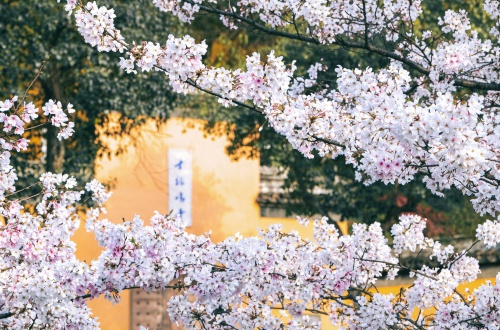 Cherry Blossom
Cherry BlossomCherry Blossom Avenue is on Jiming Temple Road next to the temple, a well-known place to see cherry blossoms in Nanjing. People started planting lots of cherry trees here in the 1980s. The path is less than 500 meters long but has over 170 trees, most of which are Somei-Yoshino—more than 70% of the total. From March to April each year, pink and white blossoms bloom like a dreamy sea, set against the temple's golden walls and dark tiles. Start from Exit 6 of Jiming Temple Metro Station, walk along the avenue to enjoy the view, then go to the Taicheng Section of the Ming City Wall. There you can take great photos that show blossoms, old walls and the temple together, a special mix of past and present.
Great Buddha Hall
The Great Buddha Hall, or Vairocana Hall, is Jiming Temple's main hall. In its center is Vairocana Buddha, who represents the Three Bodies of the Buddha. On either side are the Bodhisattvas Manjusri and Samantabhadra, and along the east and west sides stand the Twenty-Four Celestial Guardians. The hall is grand, with big eaves, fancy brackets, and carved beams that show classic solemnity. Incense smoke rises, and Buddhist chants fill the air, making visitors feel deep spirituality. Here, pilgrims pray earnestly for peace, health, wisdom and other blessings, finding comfort and calm inside.
Medicine Buddha Pagoda
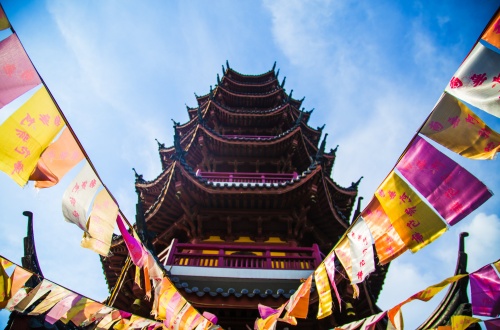 Medicine Buddha Pagoda
Medicine Buddha PagodaThe Medicine Buddha Pagoda, Jiming Temple's landmark, sits at the complex's highest point. This 44.8-meter-tall structure is elegant, with seven octagonal levels, double eaves, bracket systems and copper roof tiles. A Ming Dynasty bronze statue of the Medicine Buddha is in its ground floor, and the southern gate has the pagoda's name, inscribed by calligrapher Zhao Puchu. Climbing the pagoda, visitors get panoramic views of Xuanwu Lake, Zifeng Tower and Sakura Avenue, where historic and modern landscapes mix. The courtyard around it, paved with polished carved bluestone, has a circular stele corridor showing stories of the Eastern Pure Lapis Lazuli Medicine Buddha, giving off timeless Zen charm and cultural meaning.
Baiweizhai Vegetarian Noodles
Baiweizhai Vegetarian Noodle Restaurant, atop Jiming Temple, is a must-visit for tourists. Its vegetarian noodles are popular, especially "Auspicious Trio Noodles"—the mushroom broth tastes great, and gluten puffs soak up the soup, spilling juices with one bite to leave a lasting aftertaste. Tasting the noodles, visitors feel the temple's quiet air and experience its unique Zen dining culture. After eating, you could once ask staff for the limited "Harmony with Mushrooms" stamp (now discontinued, resumption date pending), adding special joy to the trip—a treat for both taste buds and soul.
Educational Value
Dating back to the Western Jin Dynasty, this ancient temple has witnessed centuries of history while remaining an active Buddhist center. Its Great Buddha Hall and Medicine Buddha Pagoda beautifully illustrate core Buddhist values through art and architecture. Today, the temple continues daily practices - from meditation sessions to scripture studies - making Buddhism accessible to all. As one of Jiangnan's most important Zen and Pure Land centers, it preserves priceless artifacts, including rare statues, carved inscriptions, and ancient texts that bring the faith's teachings to life.
Activities to do at Jiming Temple
Prayer Activities:With their ticket, visitors can get three incense sticks at the mountaintop prayer area, where staff shows how to hold them right thumb supporting the base, index finger pinching. Then they can go to pray in different halls. Parents often take their children by the left hand to circle the Medicine Buddha Pagoda three times as a prayer, with soothing wind chimes from the pagoda. Donate 10 yuan at Manjusri Hall, and you get a blessed pencil, popular with students wanting academic success during exams.
Stamp Collection: Collect special stamps at six sites, including the Medicine Buddha Pagoda and Guanyin Hall—a full set earns a limited-edition sakura bookmark. Free fortune slips are available weekly on Wednesdays at the culture shop. Previously, stamps could also be obtained after purchasing vegetarian jerky at Xiaozhai Store or dining at Baiweizhai (currently paused; resumption pending), catering perfectly to stamp enthusiasts.
Drop us a line and we'll connect you with the top China expert in no time!
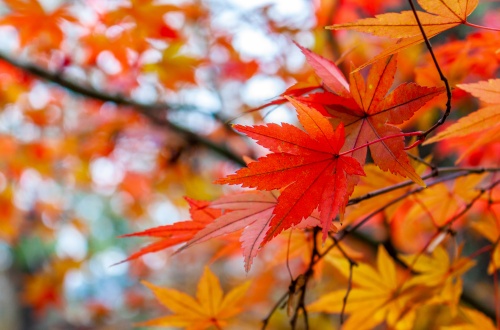 Nanjing Hongshan Forest Zoo
Nanjing Hongshan Forest Zoo 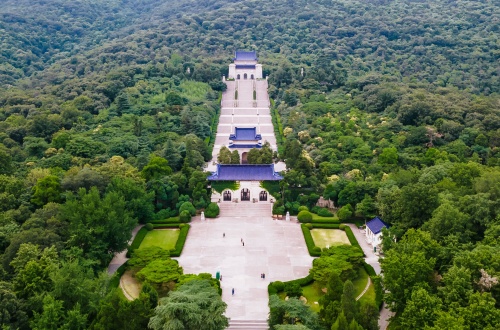 Nanjing Sun Yat-sen Mausoleum
Nanjing Sun Yat-sen Mausoleum 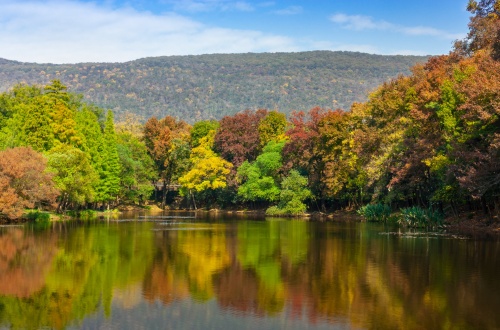 Zijin Mountain Scenic Area
Zijin Mountain Scenic Area 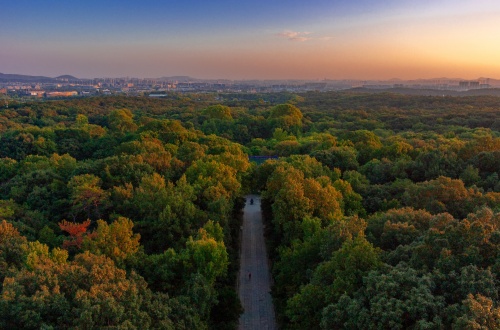 Zhongshan Mountain National Park
Zhongshan Mountain National Park